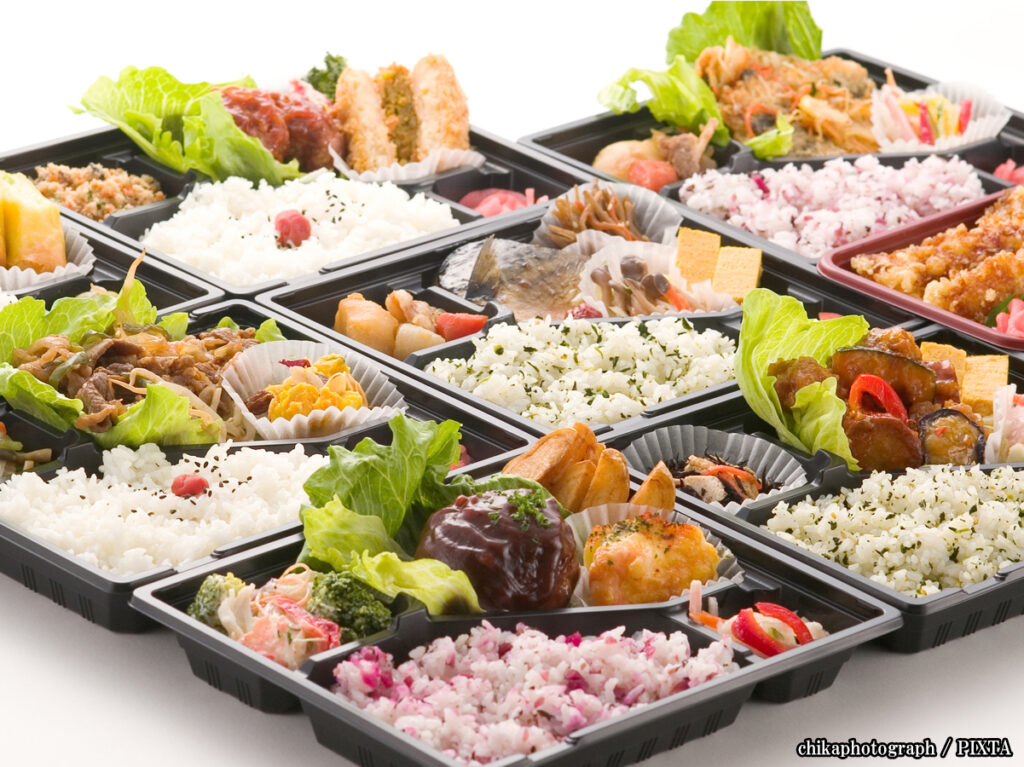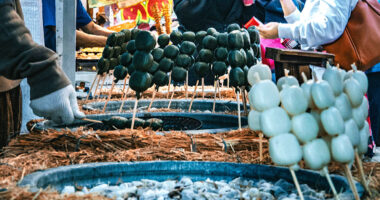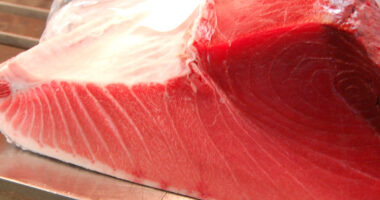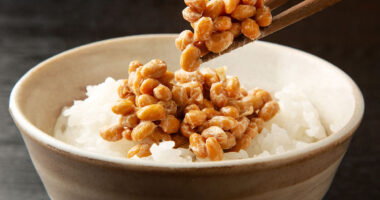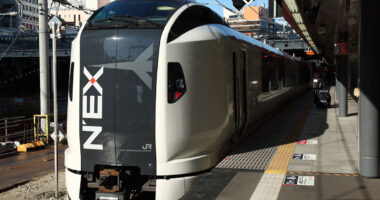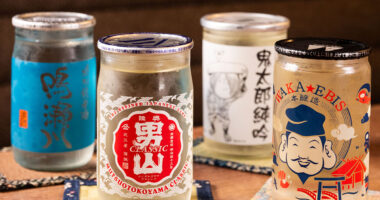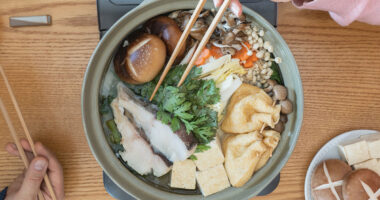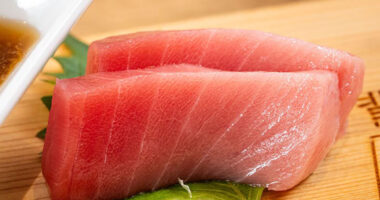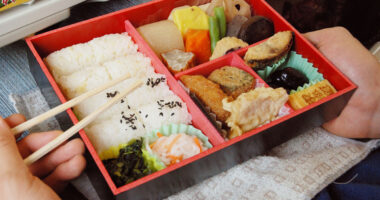A bentō (often called “bento box” in English) is more than just a packed lunch—it’s a cornerstone of Japanese food culture that blends practicality, nutrition, and aesthetics into one thoughtfully arranged meal. Traditionally, a bento includes rice, fish or meat, and a variety of pickled or cooked vegetables, all neatly separated within a compact container. The concept dates back centuries, evolving from simple rice boxes carried by travelers and laborers into the diverse and often artistic versions seen today. For many, the bento reflects a thoughtful, well-balanced approach to eating, and a deep cultural appreciation for both food and presentation.
Common bento types: ekiben, makunouchi, kyaraben, etc.
Japan’s bento culture is remarkably varied, with different types tailored to specific occasions and tastes. Here are some of the most recognizable and distinct styles:
- Ekiben:
Short for “station bento,” ekiben are sold at train stations and on trains across Japan. They showcase regional flavors and specialties, turning a simple journey into a memorable dining experience. Each one reflects local pride, with ingredients and recipes rooted in regional traditions.
- Makunouchi bento:
A traditional and well-balanced option, makunouchi bento typically includes white rice, grilled fish, tamagoyaki (sweetened rolled omelet), and assorted sides like umeboshi (pickled plum), kamaboko (fish cake), and boiled vegetables. The name dates back to the Edo period and refers to meals eaten during the intermissions between maku (acts) of Noh and Kabuki theater.
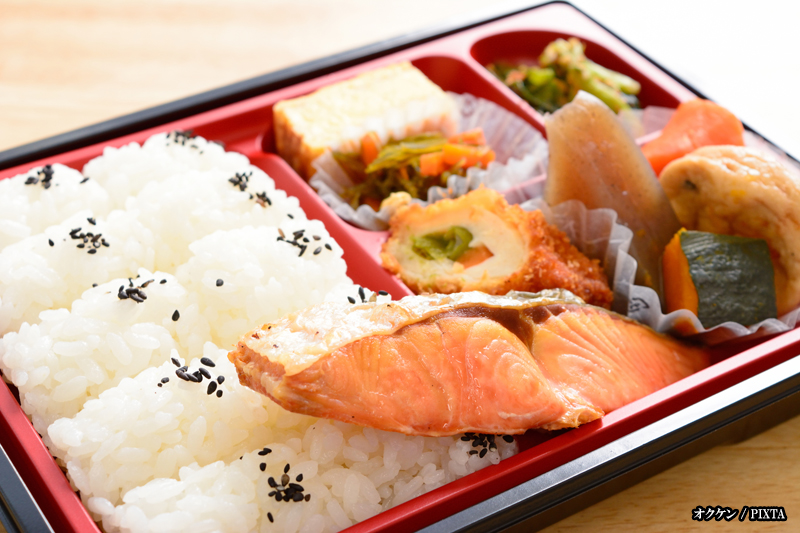
Photo for illustrative purposes
- Kyaraben:
Short for “character bento,” kyaraben are intricately designed lunches in which the food is shaped to resemble animals or popular characters from anime, manga, or games. Often prepared by parents for their children, these bentos require patience, planning, and a steady hand, turning a daily meal into a small, edible work of art.
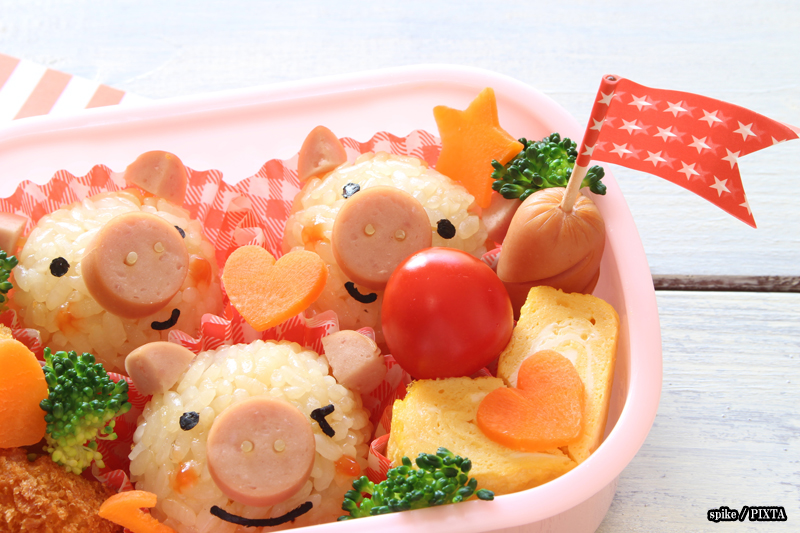
Photo for illustrative purposes
- Noriben:
This simple, comforting bento primarily consists of rice topped with a sheet of nori (laver seaweed), often seasoned with soy sauce. It usually includes a piece of fried fish or chicken and a few basic side dishes, making it a familiar and affordable everyday option.
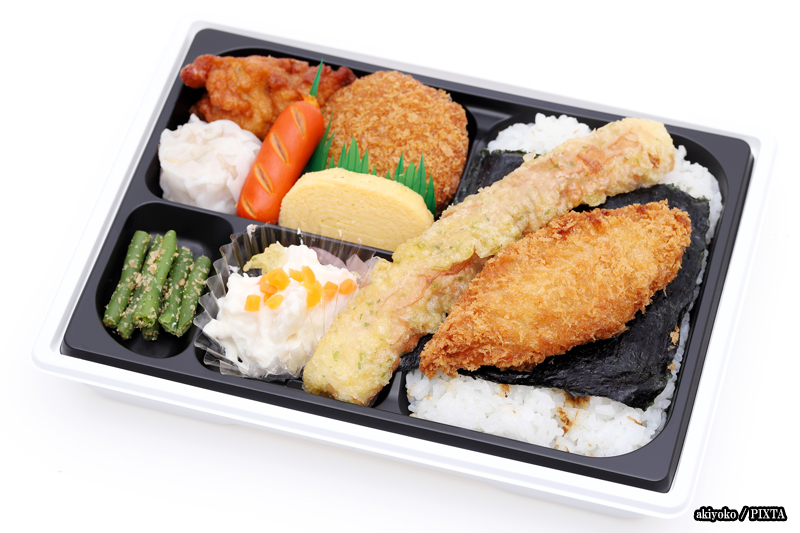
Photo for illustrative purposes
Bento by occasion: office, school, travel
The bento box’s versatility makes it a fixture in nearly every aspect of daily life in Japan:
- Office bento:
Many Japanese workers bring homemade bento to the office. These lunches are made to be filling and cost-effective.
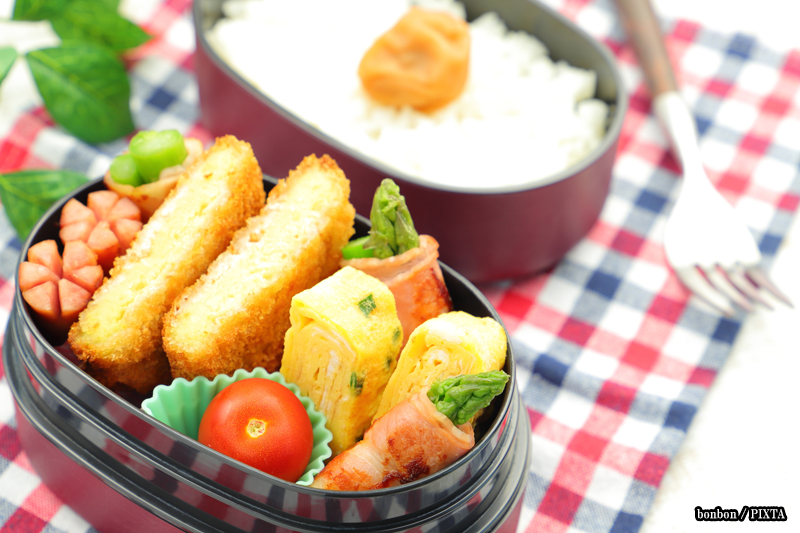
Photo for illustrative purposes
- School bento:
A cornerstone of childhood in Japan, school bentos are usually made by parents for their children. Some take the form of elaborate kyaraben, designed to show affection and imagination. These lunches are meant to be eaten at room temperature and provide a well-balanced meal for growing kids.
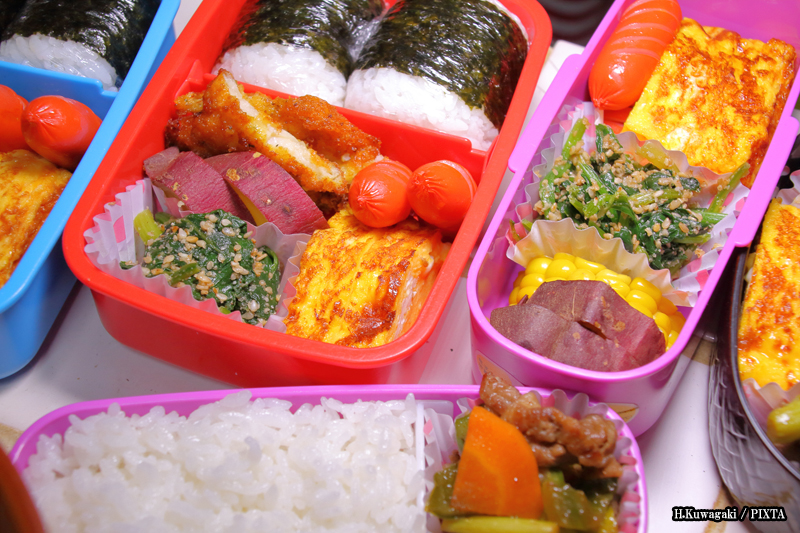
Photo for illustrative purposes
- Travel bento:
This is where ekiben shine. Whether on a Shinkansen (bullet train) or a local train, enjoying a beautifully packaged ekiben while watching the landscape pass by is an iconic part of travel in Japan. Packaged for easy use, they typically come with disposable chopsticks and wet wipes.
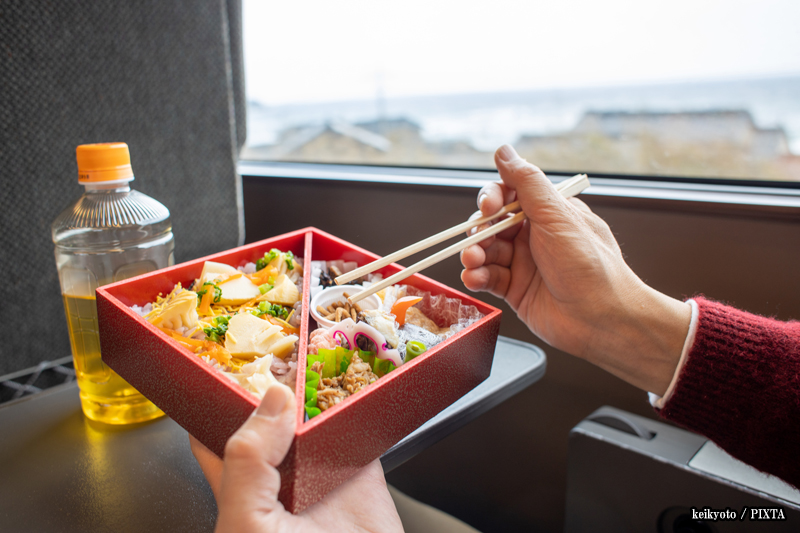
Photo for illustrative purposes
- Picnic / hanami bento:
For outdoor gatherings like hanami (cherry blossom viewing) or picnics, larger and more elaborate bentos are often prepared. They’re built for sharing, with an assortment of dishes meant to please a crowd.
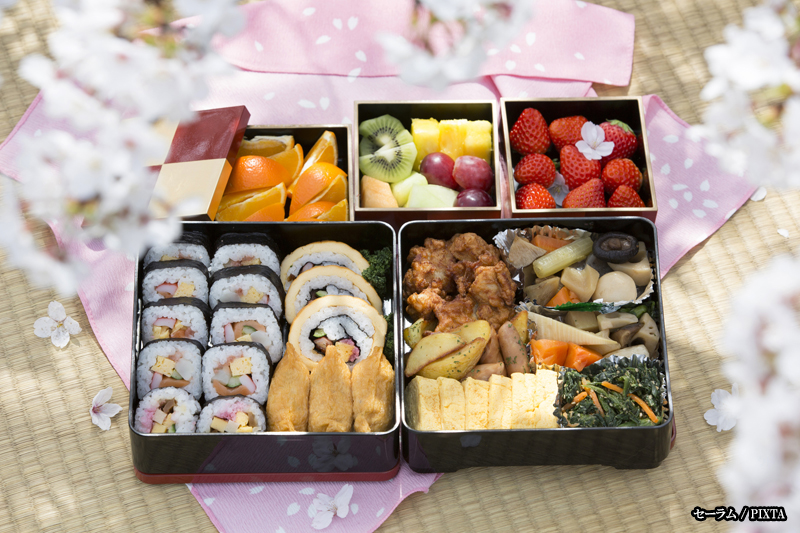
Photo for illustrative purposes
Ingredients and seasonal variations
The contents of a bento reflect the core values of Japanese cuisine—balance in flavor, texture, and color—distilled into a compact, portable meal.
- Core components:
Most bentos are built around a base of rice, usually plain white rice, sometimes topped with furikake (rice seasonings) or containing an umeboshi for flavor and preservation. The main protein varies but often includes grilled fish (like salmon or mackerel), karaage (Japanese-style fried chicken), tempura, or other meat preparations. - Side dishes:
An assortment of small side dishes adds both balance and visual interest. Common choices include tamagoyaki, blanched or stir-fried vegetables such as broccoli, carrots, or green beans, kimpira gobō (braised burdock root and carrot), tsukemono (vegetable pickles), and occasionally small portions of noodles or potato salad. - Seasonal variations
Bento ingredients often change with the seasons, in line with the concept of shun, which celebrates ingredients at their seasonal best.- Spring:
Dishes may include takenoko (bamboo shoots), nanohana (canola blossoms), and other fresh spring vegetables. - Summer:
Expect lighter fare such as hiyashi chūka (Chinese style chilled noodles), summer vegetables, and refreshing pickled items. - Autumn:
Ingredients like kuri (chestnuts), mushrooms, and sweet potatoes reflect the harvest season. - Winter:
Heartier dishes are more common in colder months, often featuring root vegetables, stews, and other warming ingredients.
- Spring:
Where to buy: convenience stores, department stores, stations
For tourists, finding a bento box is incredibly easy, with options to suit every budget and preference.
- Conbini (convenience stores):
Chains like 7-Eleven, FamilyMart, and Lawson are everywhere in Japan with shelves stocked full of fresh, affordable bentos. Perfect for a quick, convenient meal, they come in various sizes and combinations and are remarkably high quality for convenience store food. - Depachika (department store basements):
The basement food halls of major department stores like Isetan, Takashimaya, and Mitsukoshi are a bento paradise. You’ll find an incredible array of gourmet options, often made by renowned chefs or featuring premium regional ingredients. Though pricier, they’re ideal for a special meal or a beautifully presented gift. - Train stations:
As mentioned earlier, train stations are the prime destination for ekiben. Major hubs like Tokyo and Kyoto have entire shops devoted to them, featuring bento varieties from all over the country. Even smaller stations usually offer a few unique local choices. - Supermarkets:
Similar to conbini but with a wider selection and often lower prices, supermarkets are another reliable place to find fresh bentos—especially in the evening, when many are marked down. - Specialty bento shops:
Scattered across neighborhoods, these smaller, independent shops prepare fresh, often home-style bentos daily. They offer a more local, authentic experience and are a favorite among nearby residents.
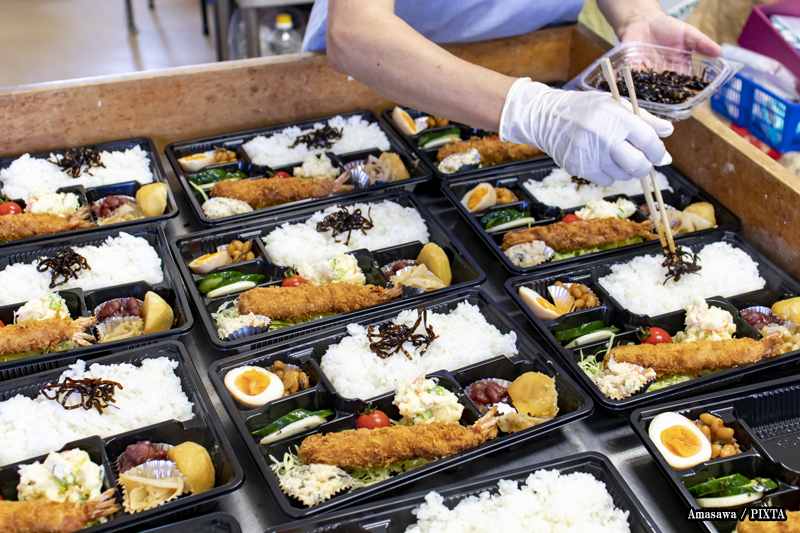
Photo for illustrative purposes
Final thought: discover Japan through its lunchboxes
The Japanese bento box is more than a convenient meal—it’s a reflection of the country’s approach to food, where balance, seasonality, and presentation matter just as much as flavor. From the regional specialties of ekiben to the artistic care behind kyaraben, each style offers a glimpse into the daily life and culinary traditions of Japan. For first-time visitors, picking up a bento is an easy and delicious way to experience Japan’s food culture firsthand: thoughtful, satisfying, and uniquely local.
